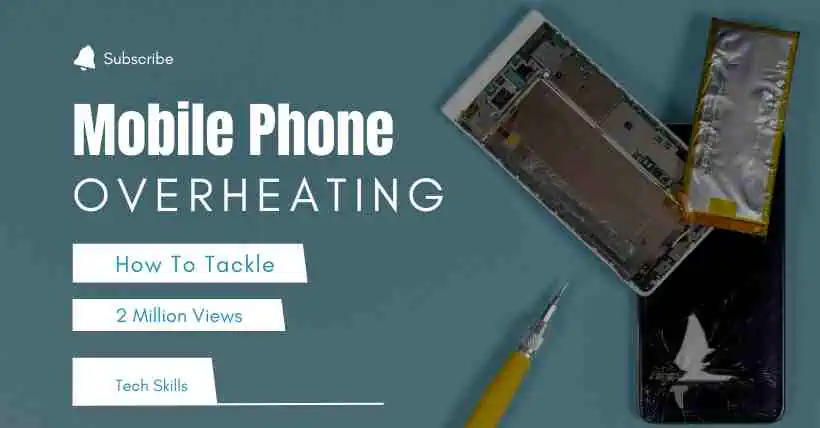Mobile phones have become an indispensable part of our daily lives, serving as our primary communication, entertainment, and organizational devices. However, users occasionally encounter an issue where their phones unexpectedly heat up, exhibiting abnormal temperatures. When faced with this situation, there are several troubleshooting steps that users can undertake to address this issue effectively.
1. Reasons Behind Mobile Phone Overheating
1.1 Excessive Background Programs
One of the primary reasons for a mobile phone overheating is the accumulation of excessive background programs. Prolonged usage or running multiple applications simultaneously can strain the device, resulting in increased heat generation. To counter this, closing unnecessary background programs is a simple yet effective solution.
1.2 Outdated System and Vulnerabilities
An outdated phone system or existing vulnerabilities can also contribute to overheating problems. Updating the phone to the latest system version not only enhances performance but also rectifies potential bugs, thereby reducing the device’s temperature.
1.3 Prolonged Usage and High-Temperature Environments
Extended usage of mobile phones, especially in high-temperature environments, can significantly impact their temperature. It is advisable to avoid prolonged usage, especially in such conditions, to prevent overheating.
2. Solutions to Resolve Mobile Phone Overheating
2.1 Closing Unnecessary Background Programs
Reducing the phone’s workload by closing unnecessary background programs is an effective method to alleviate overheating issues. This action lowers the device’s load, subsequently decreasing its temperature.
2.2 Restarting the Phone
Restarting the phone is a quick and efficient way to clear caches and free up memory, thereby reducing the burden on the device and subsequently lowering its temperature.
2.3 Battery Replacement and System Updates
Consider replacing an aging or non-original battery with a new one to improve battery life and reduce internal resistance, resulting in lower operating temperatures. Additionally, updating the system to the latest version enhances performance and diminishes overheating risks.
2.4 Tips for Avoiding Overheating
In addition to the aforementioned solutions, users can avoid overheating by limiting prolonged usage, especially in high-temperature settings. Using a cooling back clip during extended usage dissipates heat and reduces the phone’s temperature effectively.
2.5 Using Cooling Accessories
When extended phone usage is necessary, utilizing a cooling back clip equipped with heat sinks and a fan aids in heat dissipation, preventing the device from overheating.
2.6 Further Steps for Persistent Overheating Issues
Regularly clearing cache and junk files optimizes storage space, improving the phone’s performance and reducing the risk of overheating. Moreover, if a protective case hinders heat dissipation, replacing it might mitigate overheating problems.
3. Conclusion
In most cases, following these prescribed steps effectively resolves mobile phone overheating issues. However, if these measures fail to rectify the problem, it could indicate a more significant hardware-related issue. Seeking assistance from the phone manufacturer or a dedicated service center is recommended for a thorough inspection and necessary repairs.
4. Frequently Asked Questions (FAQs) on Mobile Phone Overheating
-
Why does my phone heat up while charging?
While charging, the phone may generate heat due to increased power consumption. This is a normal occurrence as the battery receives a charge, and a certain level of heat generation is expected during this process.
-
Are third-party chargers responsible for phone overheating?
Yes, third-party chargers might lead to phone overheating. Inferior quality chargers may not regulate voltage effectively, causing instability and increased heat generation during charging.
-
Can using the phone in direct sunlight cause overheating?
Yes, using the phone in direct sunlight or extremely hot environments can lead to overheating. Excessive exposure to heat from the sun can elevate the device’s temperature and impact its performance.
-
How frequently should I clear cache and junk files?
It’s advisable to clear cache and junk files regularly, perhaps once a month or as needed. This maintenance task optimizes storage space, enhances the phone’s performance, and reduces the risk of overheating.
-
Is overheating a sign of a damaged phone battery?
Overheating can sometimes indicate a damaged or aging battery, but it’s not the only factor. Several other reasons, like excessive usage or environmental factors, can also contribute to overheating. If the issue persists after troubleshooting, consulting the manufacturer or a service center is recommended for further evaluation of the battery’s condition.




